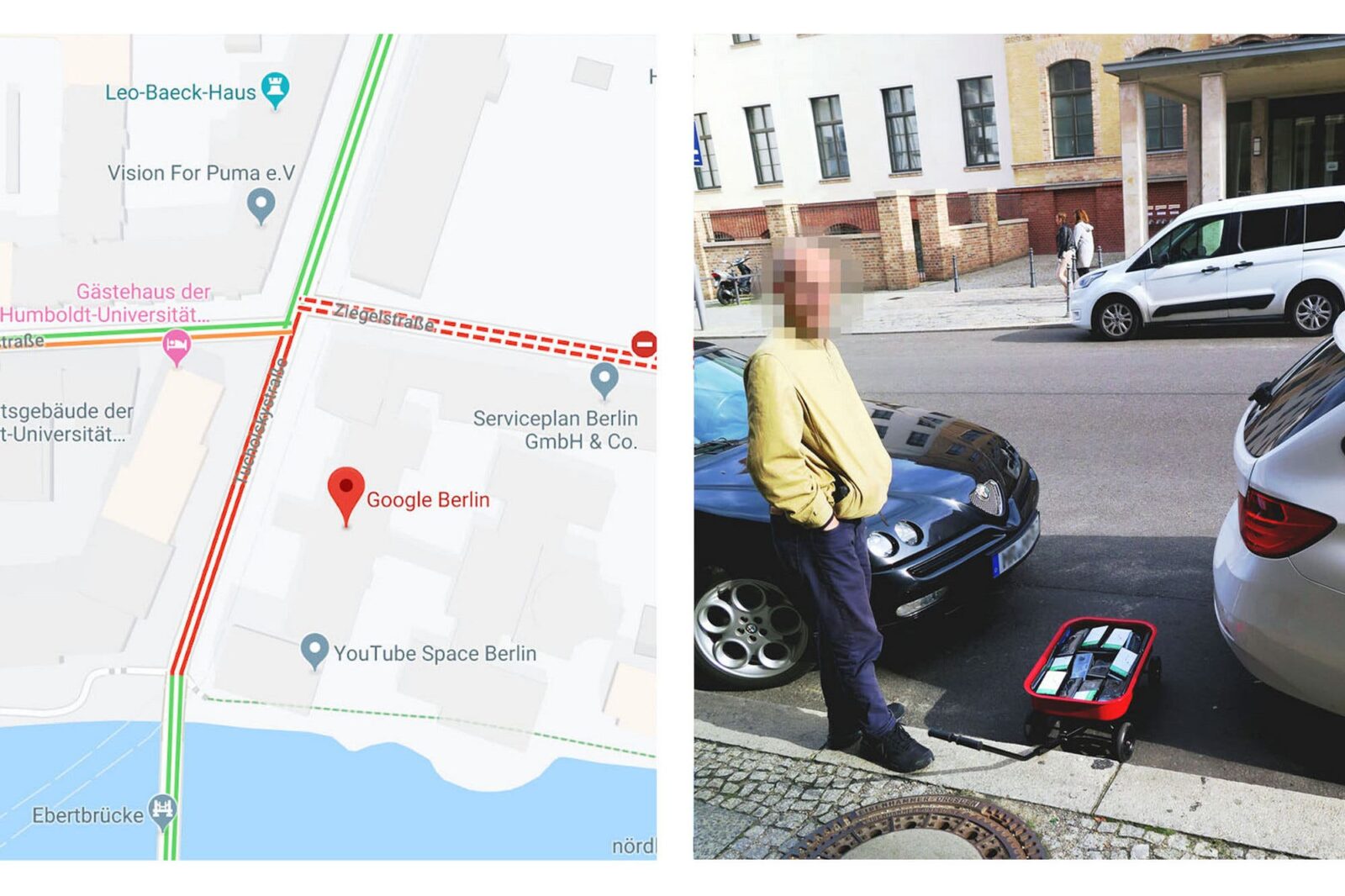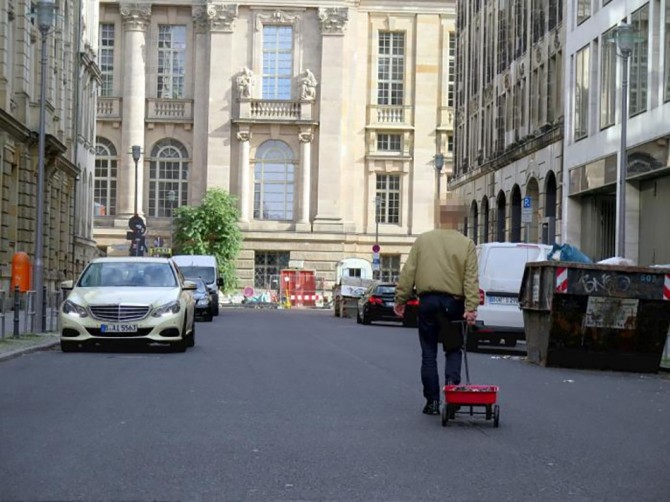Artist Simon Weckert, armed with nothing more than a red cart with 99 used cell phones, managed to create a virtual traffic jam. The Berlin performer simply turned on all the phones, running the Google Maps application on them, and walked through quiet city streets.
The blocks he was walking in weren’t filled with traffic, but Google Maps saw a cluster of signals. Typically, this indicates a traffic jam or accident, and the application advises users to bypass the area on alternative routes.
The Wackert idea was born out of a simple question. Google Maps combine data from multiple sources, but rely mostly on real users who are actively locating. So what happens if you literally create a digital device dump? Wackert thought about this during the May Day demonstration in Berlin, when he realized in the crowd that Google Maps visualizes the concentration of people (and their phones) on the street as a traffic jam.

The author had been developing his project for about two years, and he had spent much of his time studying the nature of maps and systems. But the most important, he said, was the performance on hacking Google Maps. He described it as “a literal one-man intervention in the work of a huge technology giant”. The ease with which he tricked Google Maps “shows how elementary these systems are.
In a video posted on YouTube, you can see a cart that slowly moves through the streets turning what are known as “green”, “free zones” into “red” – intense traffic.
The evening coincided with the upcoming 15th anniversary of Google Maps. One of his walking routes passed by the company headquarters in Berlin.
“Even if you don’t have a location service or don’t use an application, data is still collected,” the artist explained his global mission. Even those who understand the prevalence of data collection often find it difficult to completely withdraw from it. Self-complacency makes the decision for us, as with an email list that we don’t get to unsubscribe from.
Vekkert refers to an article by Moritz Alchert entitled “The Power of Virtual Maps”, which shows that maps are not as neutral as one might think. “There is a real contradiction, because maps are not territory at all, but another version of reality,” said the artist in an interview with Artnet News. – Data is always collected for a specific purpose, for an organization, using tools created by the company.
Google, for its part, reacted to the performance with humor. To quote the company’s response on 9to5Google: “Whether it’s a car, cart or camel, we are happy to watch the creative use of Google Maps as it helps us to improve their performance over time.
Traffic data in Google Maps is constantly updated with information from various sources. This includes aggregated anonymous data from people who have location enabled and input from the Google Maps community. In several countries – including India, Indonesia and Egypt – we’ve launched the ability to differentiate between cars and motorcycles, although we didn’t include shopping carts.

























